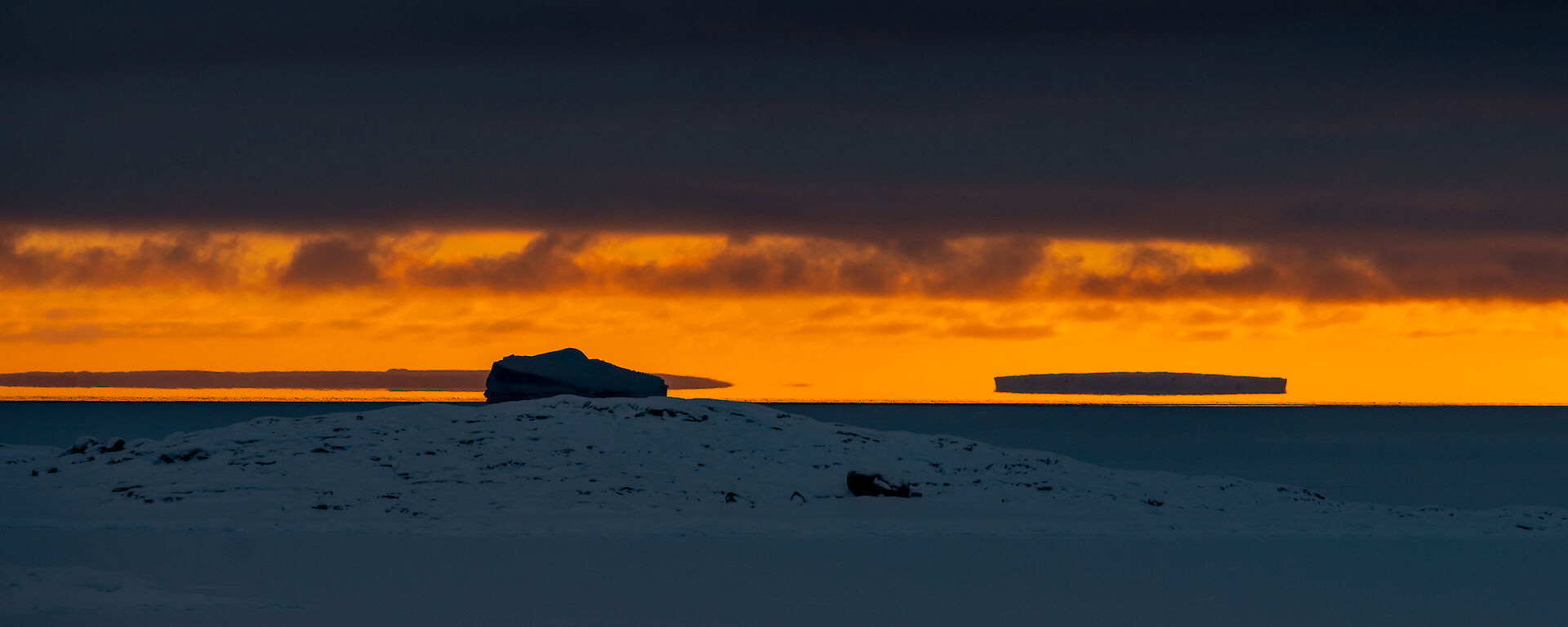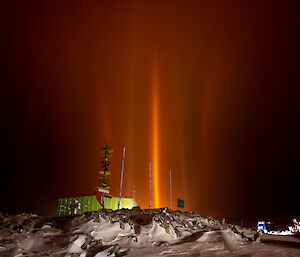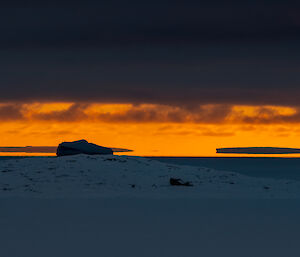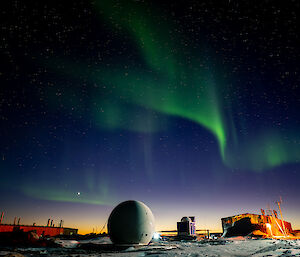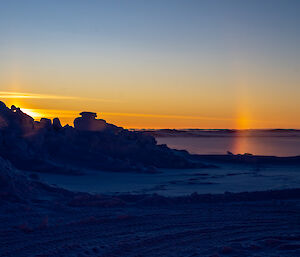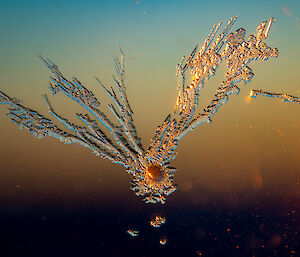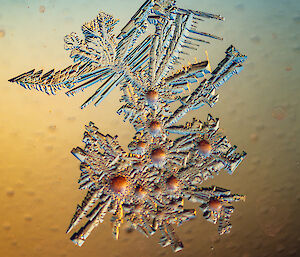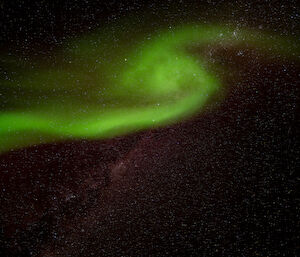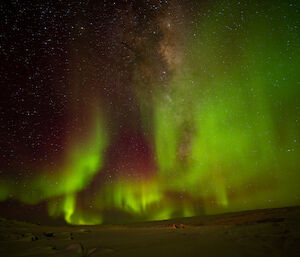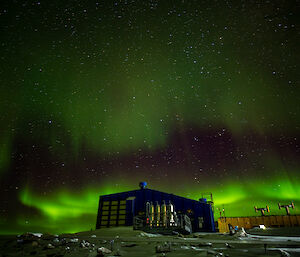Winter at Casey provides amazing opportunities to photograph phenomena that only occur in polar regions. The days have been short – around 2.5 to 3 hours in length. Despite the days being so short there are long periods of dawn and dusk. When the sun does appear it skirts across the northern horizon, reaching a meridian (local noon) altitude of 1°.
Over the last few weeks there have been several wondrous long nights when expeditioners have been treated to the aurora australis.
Simply put, an aurora (aurora australis or aurora borealis) occurs in the ionosphere, when the ions of the solar wind collide with atoms of oxygen and nitrogen from the Earth's atmosphere. The energy released during these collisions causes a colourful glowing halo around the poles.
Other phenomena that occur in the polar regions include –
Light and solar pillars – vertical beams of light appearing to extend above and/or below a light source. If the light comes from the sun (usually when it is near or just below the horizon) it is called a sun pillar or solar pillar. The phenomenon is created by the reflection of light from tiny ice crystals suspended or falling through a very cold atmosphere.
Fata Morgana – a complex form of mirage visible in a narrow band right above the horizon.
The term Fata Morgana is the Italian name of the sorceress Morgan le Fay (“Morgan the Fairy”) of Arthurian legend. These mirages were believed to be fairy castles or false land conjured by her to lure sailors to their deaths.
Another optical phenomenon seen here are sun dogs, sometimes called “mock suns” and also “parhelia”. The sun dog is part of the family of halos. These are caused by the refraction of sunlight through ice crystals in the cold atmosphere. Sun dogs typically appear as a pair of subtly coloured patches of light, around 22° to the left or right of the sun.
Another cool phenomenon is the ice crystals that are ever present in inside panes of the double and triple glazed windows around the station’s buildings. These are quite small and through a special macro lens, I have been able to magnify the crystals, revealing their intricate lattice patterns.
Another really cool effect is throwing hot water up into a extremely cold atmosphere.
The Antarctic is such a unique environment and there are so many opportunities to photograph the special things that only can be seen here. My suggestion to present and future expeditioners is to purchase reasonable camera equipment to capture these once-in-a-lifetime images.
-Barend (Barry) Becker

